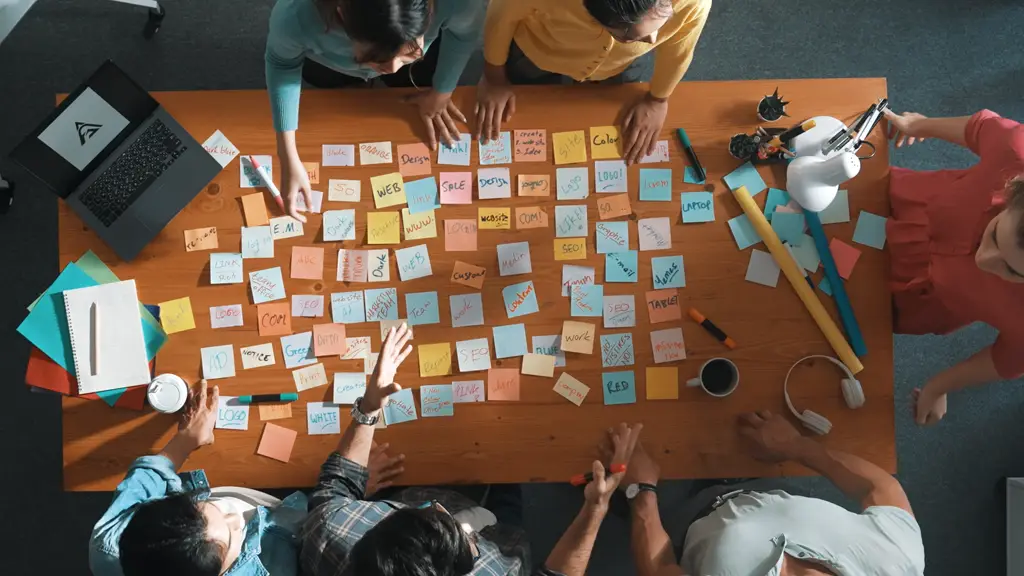Delivering a seamless customer experience requires coordination across multiple departments within an organization. However, as companies grow, this coordination becomes increasingly challenging. Customer journey mapping workshops offer a solution by bringing together cross-functional teams to align on the customer’s path and identify opportunities to improve it.
In this article, we look at the benefits of establishing journey maps. We also explore key elements that contribute to the success of journey mapping workshops for your business.

Understanding the Customer Journey Map
A customer journey map is a visual representation of the steps a customer takes when interacting with a business, from initial awareness to post-purchase support. It outlines the various touchpoints, actions, and emotions a customer experiences throughout their relationship with the company.
For instance, the customer journey often begins with the sales or marketing team guiding customers toward the best solution for their needs. From there, customer service helps customers maximize the value of their purchases. If technical issues arise, the IT department steps in to resolve them. Additionally, an account manager may facilitate multiple interactions while identifying opportunities to upsell additional products and services to existing customers.
By mapping this journey, you can better understand your customers’ needs, pain points, and expectations at each stage. This enables you to optimize the experience and improve customer satisfaction. Your team will be better equipped to handle your customers’ multifaceted needs and sell additional products and services more successfully.
Journey Mapping: Key to Cross-Functional Coordination
Customers interact with multiple organizational departments as they move through the sales funnel. For a seamless experience, these teams must be aligned and work together toward meeting the client’s needs. Without a clear set of guidelines, every department is on its own when handling the intersection of customer service and product offerings.
A customer journey mapping workshop brings together representatives from across the business to collectively define the journey, identify areas of friction or disconnect, and develop strategies to improve coordination and collaboration. It puts departments on equal footing as they handle their respective customer touchpoints. By fostering this cross-functional alignment, companies can ensure a consistent, high-quality experience for their customers at every touchpoint.
How to Structure a Creative Workshop
The idea behind the creative workshop is stringing together all the departments according to their roles in the overall customer journey—even those that don’t directly interact with customers. To achieve success, the workshop should incorporate the following elements:

1. Define a Clear Objective
The workshop should have a specific, measurable goal, such as identifying pain points in the customer experience or aligning cross-functional teams on the customer’s path. This will ensure the discussions stay focused and productive.
2. Assemble the Right Participants
Invite representatives from all the departments that interact with customers, including marketing, sales, customer service, IT, and product management. Also include executives who can provide high-level insights. Diverse perspectives are crucial for a comprehensive understanding of the customer journey.
3. Prepare Thoroughly
Make sure all participants come to the workshop equipped with the necessary information and tools. This includes providing a customer journey mapping template, sticky notes, and any relevant customer data or personas. Scheduling the workshop at a convenient time and location for everyone will also set the stage for a productive session.
4. Set the Stage
Begin the workshop by explaining the purpose, process, and expected outcomes. This will help participants understand their role and feel comfortable contributing their insights and ideas.
5. Facilitate Collaborative Discussions
Encourage open dialogue and active participation from everyone in the room. Use techniques like brainstorming, empathy mapping, and customer journey visualization to capture the customer’s experience and identify areas for improvement.
6. Document and Distribute the Results
Assign a note-taker to digitize the journey map and key takeaways from the workshop. Ensure this information is shared with all participants so they can continue to reference and build upon the insights gained.
The Power of Collaborative Customer Journey Mapping
A well-designed creative workshop empowers employees to understand and effectively address customer requirements. By fostering effective communication, the workshop unifies different departments towards the common goal of delivering an excellent customer experience throughout the buyer’s journey.
If you’re looking to improve customer satisfaction and drive business growth, consider implementing a customer journey mapping workshop. The team at UpTop would be happy to guide you through the process and help you unlock the power of cross-functional alignment.
Our journey mapping exercises help identify internal and external friction points. They serve as the foundation of our user research during design sprints and as a starting point for identifying opportunities to innovate. Journey mapping is an integral part of a broader design approach to larger initiatives. Contact us today to get started.


